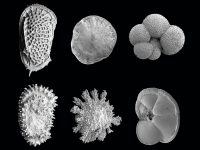
Some birds have a remarkable ability to reproduce the sounds of human speech. These repetition machines brighten our spirits, but the activity involves no symbolic thought whatsoever. This is a remarkable achievement because the production and articulation of phonemes is a complex neural and muscular task. So much so that the field of palaeoanthropology is currently debating whether or not our Neanderthal relatives possessed the required hearing and vocal structures to generate something similar to speech – which, mind you, does not necessarily imply language. In any case, the example of birds shows that discovering that Neanderthal anatomy was capable of perceiving our range of sounds or producing our range of vocalisations is not proof of any symbolic capacity and, much less, of language – contrary to what, rather frivolously in scientific and journalistic terms, we often read in the press.
«Let us take a step back, lest we fall into expressions such as “there is no doubt”, or “definitive proof”. Science does not play well with them»
If we translate the skill of capturing and reproducing sounds to the visual world, then we have figurative art. Humans are rather clumsy at this: we struggle to make copies – drawings, for example – of what we see. Three-year-old children can speak with astonishing fluency and instantly imitate any new word as soon as they hear it; however, if we give them a pencil and ask them to paint a flower, they will make a hard to identify scribble. Precisely because of this – because of the difficulty involved in representing clearly, simply, elegantly and with firm strokes, for instance, a deer – we are fascinated by the art of the Palaeolithic. Chauvet, Altamira, Lascaux… we call it art because it seems like art to us, regardless of the motives behind its creation. These drawings and engravings are so admirable that they have become the definitive proof of the emergence of the modern mind, of the explosion of symbolic thought and, along with it, of language. There is no doubt about it: the people who entered the Chauvet cave were, in cognitive terms, «us».
But… let us take a step back, lest we fall into expressions such as “there is no doubt”, “definitive proof” and the like. Science does not play well with them. Basically, to represent a deer masterfully, what we need is good visual memory and unusual motor control. We assume full symbolic and linguistic capacities in our Upper Palaeolithic relatives because we study the full set of cultural artefacts; strictly speaking, «art» alone would not be proof, as the autistic child Nadia Chomyn (1967–2015) taught us. In 1998, the British neuropsychologist Nicholas Humphrey published in the Cambridge Archaeological Journal a surprising paper entitled «Cave art, autism, and the evolution of the human mind». Humphrey noticed something that had gone unnoticed by palaeoanthropology: between the ages of three and six, Nadia made drawings of horses, humans, cows, elephants and other animals with astonishing mastery, drawings very similar in appearance and stylistic characteristics (stroke, superimposition of images, etc.) to those of Palaeolithic parietal art. Nadia suffered from severe social and motor limitations; she made her drawings with a «pre-modern mind», lacking language, with hardly any symbolic capacity, no interest in communication and no previous artistic training. Nadia’s case showed that we cannot assume that our Palaeolithic ancestors possessed cognitive capacities typical of the modern mind (symbolism, language) from cave art alone.
A few months ago, a giant deer phalanx was found in Germany, with intentional cut marks made 51,000 years ago; the press and some scientists are already talking about it being «definitive proof that Neanderthals were capable of complex, symbolic thought». Let us take it one step at a time…





